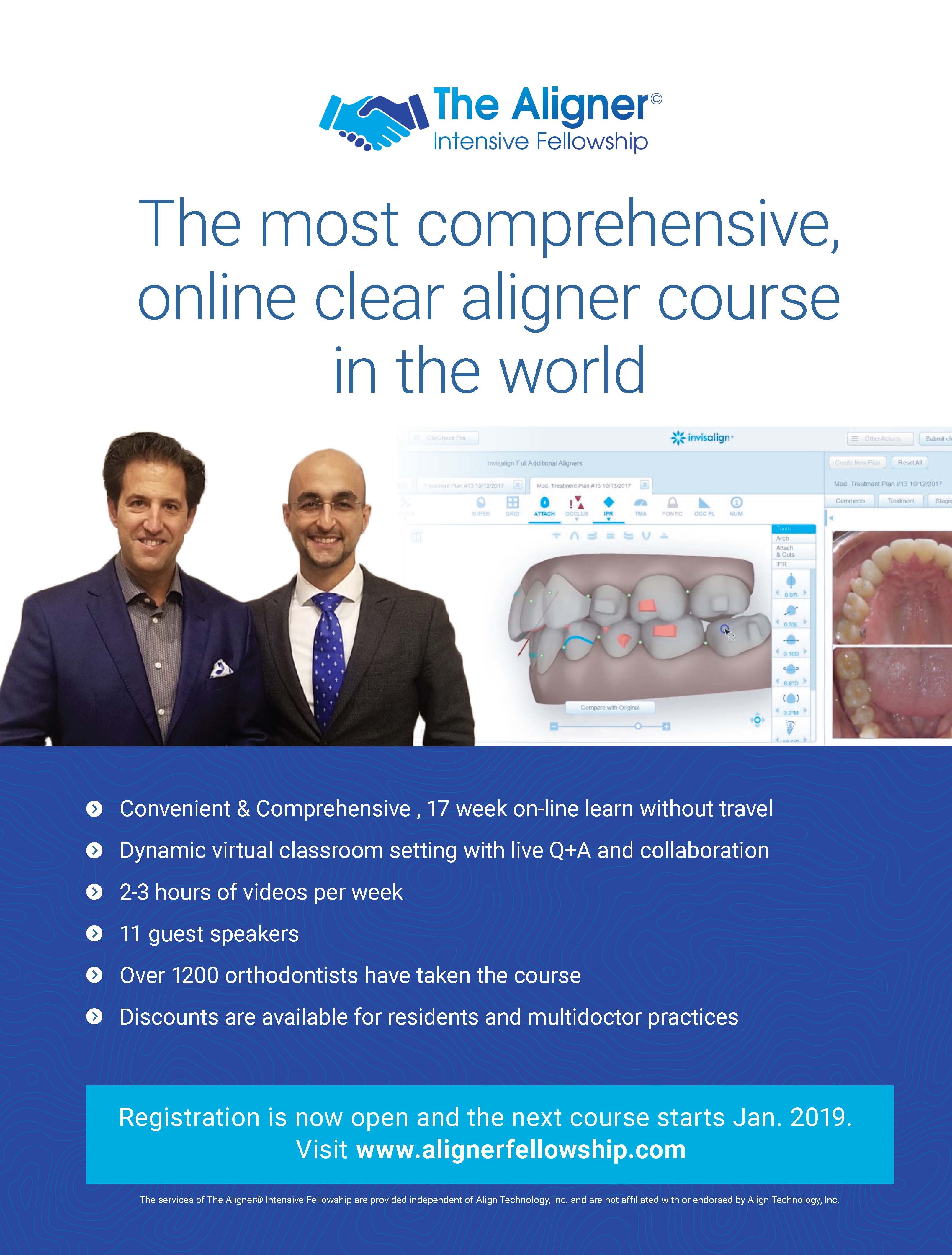As I write this column, I have just returned from the biennial Invisalign Summit in Las Vegas. I have attended most of these meetings over the years, and I have to say that they just get better and better. What was once basically one manufacturer’s congress for clients and investors has evolved into a major international orthodontic conference, with participants from all over the globe. Like any major dental meeting, it is not just a technical, scientific, and promotional meeting, but a big social event as well. It’s always great to catch up with old friends and colleagues and to discuss new developments in one another’s lives, careers, and practices. It’s also a useful opportunity to exchange ideas and to learn what’s new in the real world outside academia. While evidence-based practice certainly has its value, the time-honored expedient of simply talking to your peers can provide a head start toward trying new things—ideas and procedures that, if they seem to work in practice, can be validated through more rigorous scientific investigation.
At the recent Summit, I was honored to be invited to chair a discussion group entitled “The Most Exciting and High Potential Developments for the Industry.” I was even more honored to serve on the panel with two distinguished colleagues: John Morton, Senior Technical Fellow for Product Innovation at Align Technology, and Sarah Shoaf of Winston-Salem, North Carolina, a long-time friend and practicing orthodontist who is also a Contributing Editor of JCO. It would be impossible to overstate how much I have learned from these individuals, but I know that my own career has been deeply enhanced by the association.
Similar articles from the archive:
- THE EDITOR'S CORNER The Evolution of Invisalign February 2017
- THE EDITOR'S CORNER The Future Is Now January 2017
- THE EDITOR'S CORNER A Digital Standard of Care October 2016
Every orthodontist will have his or her own ideas about what constitutes a “most exciting and high potential development.” (In fact, I would be curious to hear yours; e-mail me at jco.editor1@gmail.com, and we will publish the most interesting submissions in a future issue.) Mr. Morton spoke quite eloquently about the possibility of marrying the technologies of cone-beam computed tomography and clear aligners to address a variety of issues, with an emphasis on anchorage. He also described how a half-century of materials innovation has pushed the envelope of aligner treatment, and he discussed the significance of the Invisalign database of more than 6 million cases. Dr. Shoaf talked about two fascinating subjects with which she is intimately familiar: creativity and women in orthodontics. She has been doing some groundbreaking work with sleep apnea and aligners, which I hope to coerce her into publishing in the not-too-distant future. She also pointed out that there are now more women being trained in dentistry and orthodontics than there are men, and she explored the positive ramifications of this development for the future of the profession.
My topics were a little more mundane, focusing on my own evolution, as an Early Adopter of Invisalign, from a few minor spacing and crowding cases to the point of now limiting my practice to aligner treatment. I made the bold assertion that braces may no longer be necessary. I’m sure I am going to take some flak for that statement, but such is the reality of my own practice.
This issue of JCO is devoted entirely to aligner orthodontics. Six distinguished groups of authors, many of whom will be familiar names to our readers, present a wide variety of articles further supporting my claim that the end of braces is in sight. Dr. Bill Gierie, our Contributing Editor in charge of the Aligner Corner, offers an overview of the exploding aligner marketplace, including helpful tables comparing the major companies in the field. Clinical topics range from Class II correction to accelerated treatment to the all-important aspect of compliance. Drs. Riccardo Favero, Andrea Volpato, and Lorenzo Favero of Italy describe the concept that I nominated as the “most exciting and high potential development” in my Las Vegas presentation: early treatment with aligners. In fact, at this point, there is no type of case that I would not consider treating with clear aligners.
I trust you will find the information presented in this special edition of JCO to be enlightening and informative.
RGK


